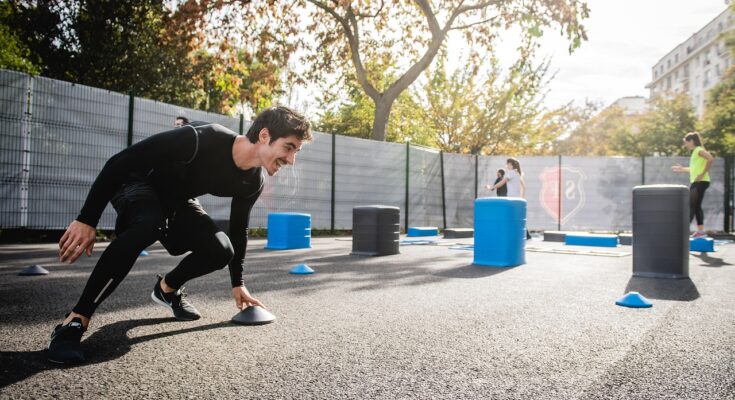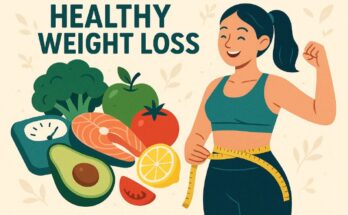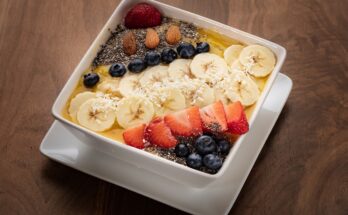Program Goals & Target Audience
Physical fitness program: Every fitness program is built with clear goals in mind–some are designed for weight loss while others are solely focused on getting a person to gain muscle, increase stamina, or improve overall health. If you know the primary goal of the program you are interested in, it will help you determine whether or not it is an appropriate program for your specific fitness goals.
Also, you want to find out who the program is intended for. Some programs are designed specifically for the true beginner with light and easy movements while others are geared towards people who are at an intermediate or advanced level and want a hard workout. There are also programs designed for the elderly, athletes, or physically impaired.
When you decide on which fitness program to enter, try to take into accounts who the program is targeted at and the expected outcomes. This way, you will know that you are working at your current fitness level and your goals for the future, which will define if the program is right for you.

Workout Structure & Types of Exercises
The structure of a workout can be one of the most important aspects of any kind of physical fitness program because it dictates how your workout sessions are structured and what results you can expect from them.
Most physical fitness programs include a variety of the following types of workouts:
- Cardio exercises like running, cycling, or jumping rope which improve heart health and burns calories.
- Weight bearing activities using weights, bands, or body movements to promote muscular growth and increase overall strength.
- Flexibility or mobility work such as stretching or yoga to improve range of motion and help diminish injuries.
- High Intensity Interval Training, or HIIT, provides you an efficient workout for burning fat, and improves endurance.
Some programs completely focus on one type of workout in a wide variety of ways, while some programs provide ways to target multiple fitness goals within a balanced program. A complete physical fitness program will provide you with an assortment of workouts and consistent progression to make sure to physically challenge your body while keeping you motivated for time to come!
When choosing a program you will want to identify one that matches your fitness level and also matches your exercise style. Whether you want a strength based program or cardio focused workouts, establishing a workout style and sticking to it will produce a more enjoyable and sustainable goal toward a healthy lifestyle.

Duration & Frequency
When considering a physical fitness program, it is important to know the length and frequency of engagement. Most programs are considered a short-term brevity (4 to 12 weeks) with specific milestones and timelines along the way. Short-term brevity or commitment will get you quicker results, whereas more long-term brevity is intended for habit-building, wellness, and sustainable physical fitness goals.
Engagement in the program and length of engagement will vary by program. There could be commitments to engage in activity daily (i.e., 7 days a week), or guide you to engage in reasonable activity 3-5 times a week. Picking a program that accommodates your schedule and energy is important to setting yourself up for success. Consistency → intensity, so the dilemma is to establish a routine.
A properly balanced physical fitness program, will include scheduled rest and recovery days to avoid burnout and minimize injuries. Before you engage in the program, I recommend you look at the program’s “weekly” commitment schedule to make sure it aligns with your lifestyle and fitness goals.
Equipment Requirements
When selecting a physical exercise program it’s important to consider the type of equipment you will be working with. Some physical exercise programs are designed to be done completely at home, with virtually no equipment—other than your own bodyweight, which is beneficial for newbies, and those who do not want to invest money in gym equipment.
Other fitness programs may require basic home items as dumbbells, resistance bands, yoga mats or kettlebells. More advanced programs might require full use of gym equipment or machines like treadmills, stationary bikes, or full weight lifting equipment.
Before you start any physical exercise program, always check to see the list of required tools. This helps you plan ahead of time, avoid unnecessary costs, and guarantees you can focus on completing the workouts. If you are working at home, you will probably want to find programs that label the program as “equipment-free” or “little-to-no equipment” for ease of use.
Instruction & Trainer Guidance
The type of instruction and trainer support involved with a physical fitness program is an important component of any fitness program. There are generally higher standards of instruction, safer routines to follow, and better results with many certified, experienced trainers.
There can be both pre-recorded workout videos as well as live instruction/live coaching with some physical fitness programs. This is especially important for beginner participants who need both valuable demonstrations, as well as step by step instruction for proper form.
When evaluating physical fitness programs, look for instruction and feedback with depth of designated modifications for beginner, intermediate, and advanced participants. Also consider which physical fitness programs provide ongoing motivation from the instructors. You will likely add value to your physical fitness program if you can find one that provides you a personal coach or trainer, especially if you have measurable fitness goals you’re trying to achieve or if you are working around physical limitations.
Good trainer support can help you succeed in any physical fitness program and produce sustainable changes whether you are exercising at home or in a gym.

Customization & Flexibility
One of the greatest benefits of a good physical-fitness program is that it is adaptable to you. Everyone has their own level of fitness, time available, and potential physical constraints. The success of physical fitness programs ultimately depends on flexibility so the participant can stick with it for the long haul.
Many quality programs offer beginner, moderately advanced, and advanced levels of comfort and difficulty. Others allow a selection of length of programs, area of focus (i.e., strength, cardio, flexibility), and rest days.
Even a customized physical-fitness program should develop as your physical fitness improves. This could mean progressing to harder/similar routines, more intense routines, or new goals. Further, having customization for your health goal not only makes it more effective, but keeps motivation intact and makes the user more likely to stick with it.
In evaluating programs; look for programs that allow modification to meet your body, skills, schedule, and objectives.
Nutrition Support
When you are reviewing a physical fitness program, nutrition support is an important consideration to keep in mind. Good nutrition supports your workout energy, aids recovery, and speeds up reaching your fitness goals. Some physical fitness programs contain pre-formulated meal plans, calorie trackers, or provide dietary guidance that is general in nature yet intended to supplement a physical fitness program.
Programs that provide integrated nutrition support usually offer recipes, shopping lists, and various portion-control suggestions to help you eat in a balanced way along with your training. Some physical fitness programs will offer a range of exercise and workout routines, but may leave food and nutrition support completely up to you.
Choosing a physical fitness program with good nutrition support can provide better results, and help you establish a healthier lifestyle.
Cost & Accessibility
Cost and accessibility are important factors to consider when selecting a physical fitness program. Programs can cost anywhere from free to premium subscriptions or one-time purchases. Many programs are designed with accompanying resources for an additional fee each month, and often include items such as a coach, a nutrition plan, or an app.
In addition to cost, accessibility is an important factor. Many physical fitness programs nowadays come with apps and websites that help users work out anytime and from anywhere. More and more people are turning to physically fitness programs outside of the gym, and this fits in particularly well with Bitcoin, and those who are maxed out with their time or prefer to work out from home.
Before you commit, consider your budget and how easy it is to access resources associated with the program. If you find a program that fits your financial situation as well as your lifestyle, the chances of commitment and success for the long
Conclusion
Choosing the appropriate physical fitness program is critical to meeting your health and fitness needs. Evaluating and considering things such as the program goals, the structure of workouts, the time commitment, the equipment needed, the support from a trainer, if it is customizable, nutrition, and most importantly, cost and accessibility, will help in determining which program will positively enhance your lifestyle and motivate you to adhere to your commitment.
The best physical fitness program for you is sustainable, meets your needs, and allows for consistency and progressive change. Take your time to reflect on your selections for a program that helps you to be healthy and active in the future.





